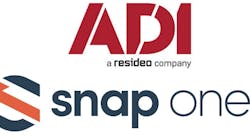All eyes are on video analytics and intelligent detection in the security industry. This month I queried Gadi Piran, president and chief technology officer of OnSSI, Suffern, N.Y., for the latest on how this technology is setting integration in action.
Harlick: How has information technology changed the security industry?
Piran: The developments of the last 20 years have transformed the way people interact as well as their expectations of what information is or should be available in what time frame. The industry is leveraging the improvements in communications technology, image quality and intelligent video analytics so that while we greatly increase the number of cameras providing enhanced security in our society, we are increasing profitability and reducing the operating costs for organizations as they implement larger and more comprehensive intelligent video surveillance solutions. All this has combined to engender rapid change, from engineering to distribution to deployment of solutions.
Harlick: Is the industry moving closer to the converged network?
Piran: The advent of IP-based solutions is now enabling the networking of diverse systems including video surveillance, access control, fire, HVAC, emergency phones, point-of-sale systems and more. New software platforms bring these systems to a single level of functionality represented on a user-intuitive dashboard and are available from any computer with an Internet connection. The best of these platforms offer tremendous return on investment by streamlining operations across many different areas of business. Key to this process is the design and engineering of products with open architecture so they can be integrated with best-of-breed solutions running on the IT backbone.
Harlick: Does a greater level of automation come with increased software functionality?
Piran: The answer to this is yes and no. Today’s end users are looking for solutions that are more intuitive and less technical. There is a greater expectation that a user should not have to be educated or experienced in the use of any given product, but that its functions and operation should be clearly revealed as it is used. For computers and computer-based systems, common functions like click-and-drag, drop-down boxes and hyperlinks are instantly recognized and immediately accessible. For the security industry, the design of a new product or service should take all this into account. If there is a steep learning curve that is required before the product can begin its useful life, it is not likely to be a product that is selected for implementation.
Harlick: What other trends are driving the security industry right now?
Piran: There has been a tremendous paradigm shift caused by the development of Web 2.0 functionality. There is a presumption of interactivity now across all platforms, whether it be an online corporate presentation, a professional message board or an editable document. Individuals expect to be able to instantly share information they are reading or watching and the converged network makes this possible. Any video surveillance system with video and data that is only locally available will be seen as extremely limited in capabilities. Today, even a very small business will have the expectation that they will not only be able to access their information remotely, but control cameras and views similarly as well.
Peter D. Harlick
Publisher

